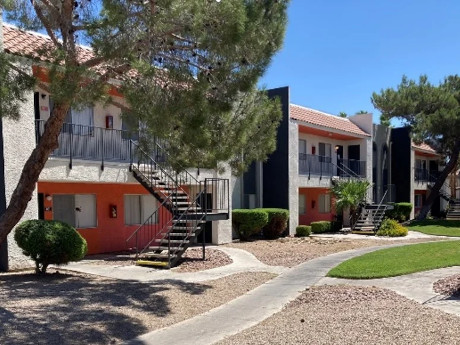— By Jason Dittenber, Senior Vice President, ABI Multifamily —
Las Vegas has attracted residents and real estate investors from around the world with its legendary nightlife, favorable climate and affordable living. In the post-COVID era, the multifamily market in Las Vegas has undergone significant changes. The city has seen a resurgence in an economy heavily reliant on tourism, but challenges persist. They include the current lending environment, increasing operational and construction costs, increased vacancy rates and declining rental rates. These factors have influenced developers and investors in the multifamily sector, creating opportunities and obstacles.
Developers like Matter, Southern Land Co. and Grand Canyon Development Partners are helping to change the city’s multifamily dynamic by contributing to its economic and social advancements. Their innovation spans job creation, community development and sustainability initiatives. Moreover, their mixed-use properties foster business expansion, enhancing the city’s commercial landscape and key employment drivers.
The Las Vegas MSA witnessed the delivery of 3,318 units in 2023, surpassing the five-year average of 3,069 units. The large number of new multifamily completions has created a more tenant-friendly market. Rental rates have softened but remain relatively high compared to average incomes. Over the past five years, rental rates surged by 45.9 percent with a notable 30.1 percent increase from 2020 to 2023.
With the rise in the level of construction activity, the demand for multifamily housing in Las Vegas started to slow down in 2023 and has continued into 2024. We are seeing some hesitancy among developers to commence new projects. Many planned developments are encountering delays or reconsideration due to difficulties in obtaining favorable construction financing and achieving projected rental incomes, as well as the escalating costs of construction. This cautious approach reflects the challenges of lease-ups as vacancy rates and softening demand increases for rentals in certain areas.
While it’s crucial for developers and investors to exercise caution in submarkets that may not offer the level of promise in today’s market, some areas like Henderson, Downtown, and the southwest and northwest are witnessing increased activity. They serve as hotspots for new development as these regions boast strong infrastructure, ample amenities and employment opportunities that foster favorable long-term growth conditions.
Some notable urban development projects, including Uncommons, Symphony Park II & III, Evora and ARIVA Luxury Residences, are playing a significant role in the city’s ongoing urban transformation. The continued revitalization efforts in Downtown/Symphony Park, along with plans for the demolition of Tropicana and the construction of a new MLB stadium, promise to further expand the city’s skyline. This should attract new residents and businesses, bringing opportunities to developers that cater to the evolving market demands.
As investors and developers in the Las Vegas multifamily market navigate challenges and embrace opportunity, adaptive approaches will be key to their success. The long-term outlook is promising for Las Vegas, as the economy continues to grow and diversify alongside its expanding city.


